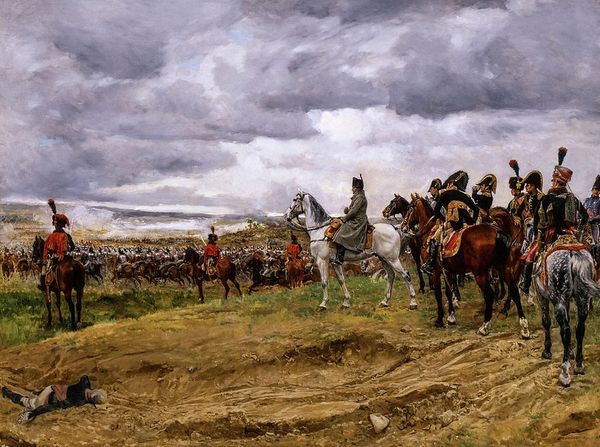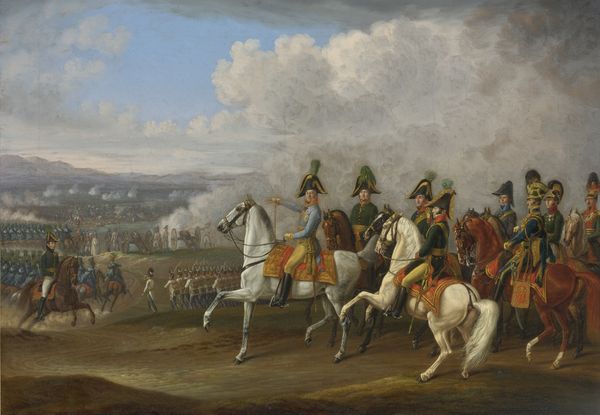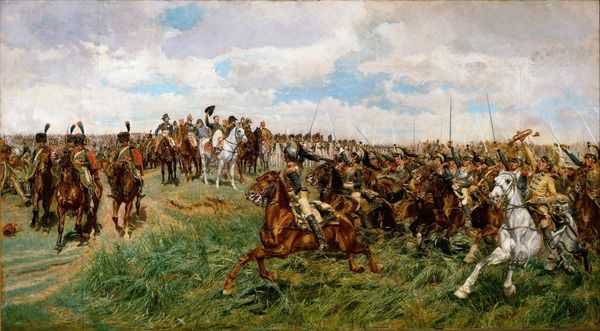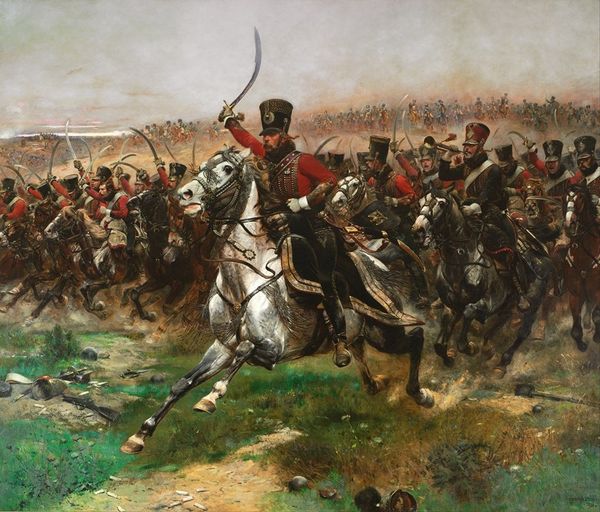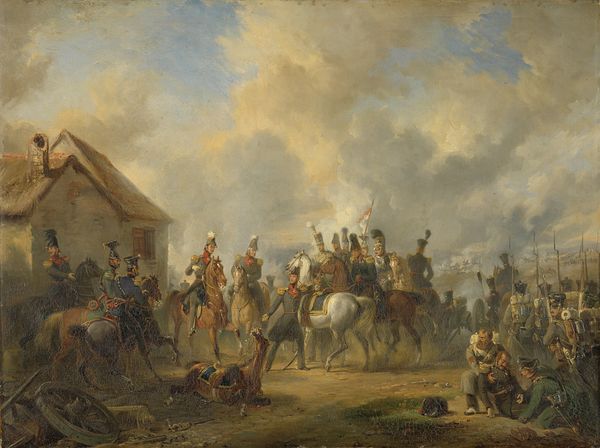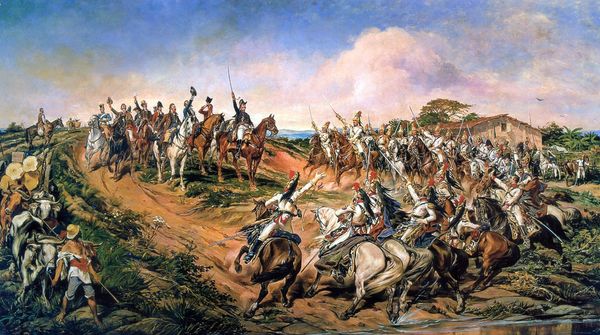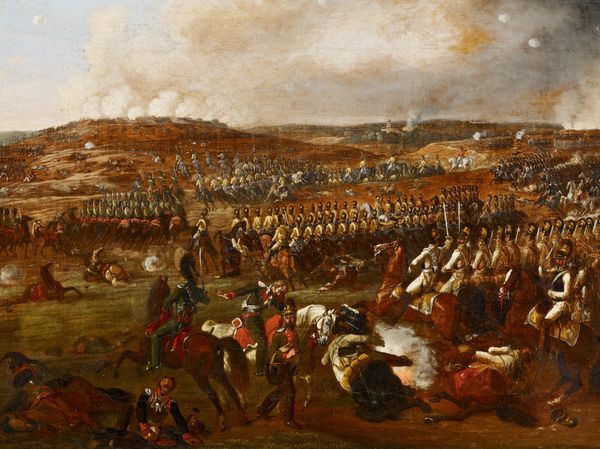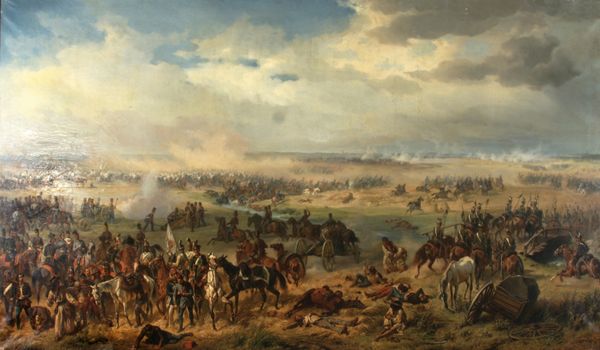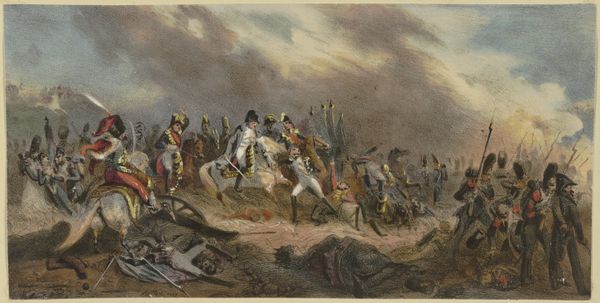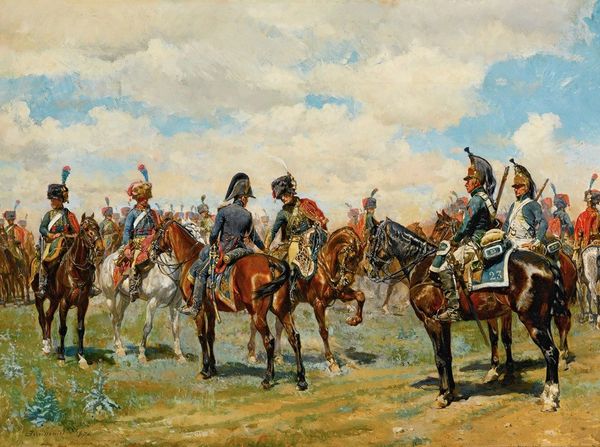
Copyright: Public domain
Editor: This is Laslett John Pott’s “The First Sight of Moscow,” painted in 1892, using oil on canvas. There's a real sense of excitement, maybe even frenzy, in the foreground, contrasted with the rather serene and distant view of the city itself. What kind of imagery stands out for you in this piece? Curator: Well, the very title itself hints at layers of symbolic weight. Consider what "first sight" represents – discovery, but also conquest. Moscow, in the distance, becomes not just a city, but a prize, pregnant with political and cultural meaning. Note how Pott has situated Napoleon, the central figure, far from the action, almost contemplative, separated from the soldiers and their eagerness. Editor: So, it's not just about the event itself, but the layers of meaning behind the image of "seeing"? Curator: Exactly! What does Moscow symbolize for the French army? What does it mean for Russian identity? The bonfire in the foreground almost feels sacrificial, or perhaps a signal of impending destruction. Are the soldiers charging toward triumph or tragedy? Pott is consciously tapping into the complex and often contradictory emotional currents of historical memory. Look closely at the discarded items at the very bottom – evidence of human cost, the individual amidst grand historical narratives. How do these elements impact the overall understanding? Editor: That’s a much richer interpretation than what I initially gathered! The details really change the mood from celebratory to something far more complicated. Curator: Precisely. Pott invites us to reconsider the cultural impact through subtle iconographic cues, far beyond a mere battle scene. Editor: I’ll certainly think about it differently now. Thanks!
Comments
No comments
Be the first to comment and join the conversation on the ultimate creative platform.
